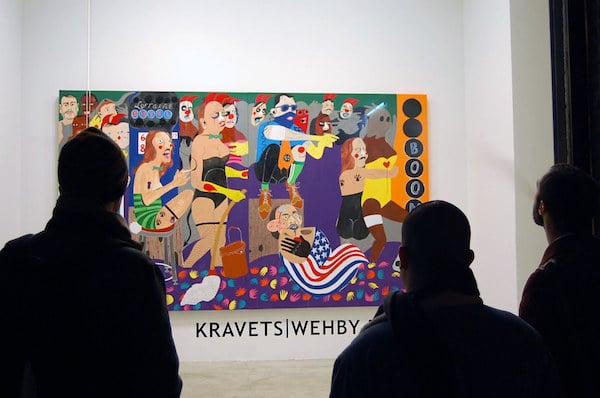I’m often asked whether everyone has a story, or whether storytelling is always important. My answer is: story is what we do as human beings. If you like Netflix or Disney, Barnes & Noble or politics, documentaries or opera, Youtube or hip hop, tattoos or graffiti, gossip columns or video games, or just exchanging conversation about your day over a glass of wine—a good bit of your life will be spent in, on, and about story. Your life IS a story. And so is mine. Do I think it’s important? I think it’s what there is. So the remaining questions would then be: do we wish to be better at it, and what makes a story better?
You get better at telling stories by doing it deliberately. Your story gets better by involving the audience. You won’t nail it the first time, so patience and persistence are requirements. Your story comes in multiple flavors, and you can heighten the flavors quickly by juxtaposing two familiar things.
In Storytelling, 80% of Being Better is Being Deliberate
Frankly, I’ve never met anyone who doesn’t tell stories. In Landmark Education, they use that term in a special way. It refers to the narrative you bring—always involuntarily, but always also with your participation, to any situation. I’ve met people whose “story” is about how they have no story. There are people whose story is how they succeeded without a story, which is of course fiction of the finest fantasy. If no one ever “got” what they did, they got something, and if they never communicated anything, they were perceived as communicating THAT. It’s like saying, “I don’t care what people think.” Then why did you bother telling ME? That is, in fact, a story, and one that sounds like it’s coming from someone who doesn’t want to admit to having one. We all have stories and we all tell stories, and it cannot be otherwise. The question of being better at it, is therefore, first and foremost, doing it on purpose.
80% of getting better at telling stories is continually being deliberate about it. We tend to see people who always and purposefully have a story as confabulists—the grifters of our perception and gaslighters of our hard and fast distinctions over fact and imagination. If they paint, we call them visual artists. But if they talk, we call them flim-flam artists. Unless, of course, they get paid a lot of money, and then they’re “legit” flim-flam artists.
Only the Audience Knows What Makes a Story Better
I maintain that we’re all constantly telling stories, and the choice to get better at it is the choice of whether or not you want to be in control of it. Everything else, you can pick up the same way storytellers have been doing it since the dawn of human communication—by watching and listening to others. Sure, there are classes, workshops, and consultants, but if you want to be expert enough to argue with them, just pay attention to stories wherever you consume them. More accurately, pay attention to the reactions of the audience—the broader the audience, the better. Those reactions will teach you what makes a story better. It’s how comedians learn, and learning deliberately is why they keep getting up and falling on their faces so often in the early days.
Fortunately, if you’re afraid of the mic or not committed to the stage, you don’t have to do it in front of a literal audience, at least not immediately. You can start with just about anyone who has ever done karaoke or seen you in a difficult yoga pose. It doesn’t matter if it’s written, spoken, or what—you can test it on them.
The Barriers: Despair, Impatience, and Magical Thinking
Don’t tell yourself that if you’re a painter, you’re going to tell your brand stories through the paintings alone. That’s a cop-out, for two reasons. Your paintings should ALREADY be telling the story, or why are you doing them? If they’re just random, you’ve got a hobby. People have said they made a whole career just randomly painting things, and I think they’re either full of it, or blind to the pattern. No one who is any good, or who is serious at all, randomly does anything. It takes too much devotion, too much pursuit of an idea—even if you can’t cognitively identify the idea, and too much commitment, for it to be random. “I just paint what I feel,” is a zen koan for dilettantes.
I think people despair when they don’t find their story instantly; not respecting how much work it is to identify what causes anything, let alone what causes a painter to paint. I think people fabricate philosophical nonsense in place of story, because they feel the simulation is at least better than silence. It isn’t. And I think people slave under the belief that art is so holy that it shouldn’t need explanation—as though “explaining” is what a story is for. A story can’t explain art—it introduces the art—it creates anticipation and selectivity with one’s time, so that attention can be paid to the art. It can’t explain it, any more than you can explain a kiss. But you can damn-sure tell stories about a kiss. Remember that one kiss, that special one? Perhaps it was the first, or perhaps the last.
So there are a lot of myths that hold people back from telling their brand story well. Branding as a concept can hold you back. We need words to describe what we’re doing, but we can’t imbue the words with magical qualities like “synergy” and “covfefe.” Effective words describe something as ancient, as common to everyone, and as reflexive as hiccuping. If you get in the right frame of mind, a story will flow out of you. You just have to unsquinch and let it rip. Do that, and there won’t be a trace of the usual sophomoric sophistry you get in so many artist statements about energies and connections and other things that end up sounding like an argument between Tesla and Svengali. An artist’s brand story will have more in common with an episode of Cheers than a lost chapter of Hobbes’ Leviathan.
The Artist’s Guide to Great Storytelling
12:00 PM EASTERN (9:00 AM PACIFIC, 10:00 AM MOUNTAIN, 11:00 AM CENTRAL)
Zoom Registration Link https://zoom.us/webinar/register/WN_NpjUbFUMS4qBqtpwVLoIzQ
Join us to hear Daniel DiGriz, the host of The Thriving Artist Podcast,TM in a live web interview with BoldBrush/FASO Chief Marketing Officer (CMO) Dave Geada. Learn how to craft a story that engages your audience, and how to tell that story to sell more art.
How to Have Fun Telling Your Brand Story—Pick a Model
Once we set aside despair, impatience, and magical thinking, we get to have some fun with it. Storytelling is fun; it’s how you know you’re doing it right. Someone always says, “I’m not a storyteller.” To him or her, I say: you’re breathing, aren’t you? So your story right now is that you’re a living, breathing member of a race of storytellers, and yet out of them all, you’re the only one who can’t tell a story? That’s Rod Serling Twilight Zone material right there. It’s definitely about you and the world, but I think you’re missing a character—your art. There’s a reason for that stuff. Why not have fun incorporating your art into your inevitable story, and see where it can take you?
If you’re not hung up and are just ready for the fun part, pick a model. Pick something or someone you like, and imitate it. Think of it like trying on costumes. Nothing will fit perfectly, but you’ll start to learn what you like and make your own choices that lead to your own version of a narrative. Ahem…that’s how visual artists get started. Contrary to popular myth, artists don’t wake up one day and just paint something that shows promise. We like that story, because we’re Americans, and all 50% of the populace who believes a thing (while the other 50% denies it) does so because we each came to our own conclusions based solely on our own thoughts, without outside influence. Right?
More likely, we learn how to do everything from playing the horn, to making cookies (sure, in our way, with our own special love), to kissing, to painting, to dressing ourselves, to storytelling, by having at some point seen something and picked a model we wanted to approximate, imitate, or improve upon. Artists are built for this, but humans are in general, too. It’s how the world was built—so many leitmotifs on the story of the first people who ever lived. Want to have fun telling stories? Then imitate things that are fun for you. Try talking about your work through an impression of whichever US President you can do, or describe it the way your worst detractor probably sees it and bristle with pride that they don’t get it. Decide what your work has in common with your favorite movie character, sports hero, or roc star, and tell it that way. Life’s too short not to play with your work, especially if you love it, because it’ll all be gone one day. Cut loose.
There’s More Than One Version of Your Story—It’s a Library
If some guy asks me where I got my hat, I can say anything: off some guy (true), the store (also true), from your Mom for Christmas (not true), Northern England (where it was made), the Lower East side (where I bought it), Orchard Street (if I’m giving helpful directions), or Brooklyn (where it was on hook a few minutes ago). If I want, to any of that I can add: “what of it?” All of those are rooted in the nexus of accuracy and cut up from that part of my personality, which a branding consultant would label “my personal brand.” Put another way, if you’ve GOT a personality, you’ve got a story, and not just one version of it.
If You’re at Sea, Juxtapose Two Familiar Things
Someone said to me, “I’d be happy with just one version.” You can simplify in the same way a screenwriter pitches an investor—it’s Steel Magnolias in space; it’s Kramer vs. Kramer with circus elephants; it’s Child’s Play II if Chucky was re-elected for a second term. Find a thing that makes you as an artist tick, then do the same for your art, then juxtapose the two. You can change it later but, for now, that’s your pitch—your story. You can think about what it implies, and add flesh to it later. CHF is an arts organization that’s all about business. That’s the crux of a story. Now you think about why the world needs that, what happens if it doesn’t get it, and what life is like if our work does what we hope it does.
I spend a lot of time reminding people that stories have structure. And I find it incredibly helpful to understand that basic structure, so that I can decode a story quickly, whether it’s a film or a Stephen King novel or a brand story I see in an artist profile. But it’s also helpful to zoom out and think about the key point here, which is, to quote a story in the form of The Edge (one of my favorite films), “what one person can do, another person can do.” We don’t get far until we find the story deep in our DNA rather than use the ones that were just dropped into our intellects as marketing advice. We all tell stories all the time. Do it deliberately, pay attention to the audience, and you’ll crack the code for your brand soon enough.







